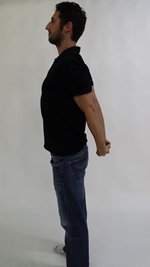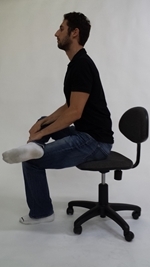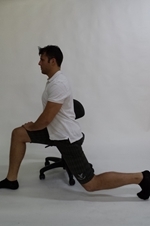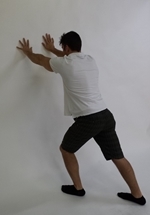TIPS FOR BUSINESS TRAVELERS!
Category:
Instruction
Date: Jun 30, 2016
Traveling is stressful to the body. Carrying luggage, sitting for long periods, switching between time zones and the hours spent in a dry, pressurized cabin environment all place different kinds of stress on your joints and organs. Add to that the mental stress of presenting yourself at your best when you’re on the road and not necessarily f your best, and the result is often illness or injury, if not right away then often upon your return home. Fortunately there are many steps we can take to ensure our bodies are well prepared for travel and the demands it places on us.
STAY HYDRATED. Drinking enough water to remain hydrated is very important. Did you know that your brain is 78% water? Dehydration impacts cognitive ability in the following ways: decreases short-term memory, reduces the ability to focus on a computer screen or reading material, and reduces hand-eye coordination and concentration. If you wait to feel thirsty before you drink water, you are already dehydrated, placing yourself at a disadvantage. To keep your system optimally hydrated, you must drink water at regular intervals, even if you don’t feel thirsty. Drinking tea, coffee, soft drinks or juice is not the same as drinking water. Aim to drink at least 1.5-2 litres of water a day, more if you drink coffee, alcohol, or if you sweat a lot. It is best to drink small amounts throughout the day rather than large amounts at once.
STRETCH. Sitting for long periods of time especially in cramped airplane seats or when sitting without maintaining awareness of correct alignment, places compressive forces on the spine and can damage the delicate structures (intervertebral discs) between the bones of the spine. Once these delicate structures are damaged due to compression and dehydration (yes! dehydration can cause the discs to become dry and thin rather than spongy and thick) the space between the bones decreases. This can lead to pain and possible disc herniation, when the centre of the disc bulges out from between the vertebrae and presses on spinal nerves, causing significant pain.
The following simple stretches can easily be done anywhere:
Seated Shoulder Shrugs
Sit upright, stacking the sit bones, ribcage, collarbones and head in alignment with one another. Feel grounded on the top of your sitting bones & imagine you’re sitting with your back and head against a wall.
Inhale while lifting the upper arms and shoulders to the ears. Make the neck disappear, notice the resulting tension in the tops of the shoulders and sides of the neck. Reach the fingers away from one another, opening the centre of your palms, and exhale as you reach down as if you’re trying to lengthen your arms to touch the floor, feeling the shoulders move down and away from the ears. Notice the tension melt from your shoulders and neck. Feel the activation of the upper back muscles. Inhale and once again, lift the upper arms and shoulders to the ears, but this time before extending and reaching down through the fingers, push the crown of the head upwards as if you’re pushing the ceiling away. Sense the head and shoulders moving in opposite directions. Repeat the sequence one last time, but now as you inhale bring the head downwards into the body like a turtle retracting it’s head into it’s shell as the shoulders come up to the ears. While exhaling and reaching downward through the fingers and arms, simultaneously push the head up as if to push the ceiling away. Each time you repeat the exercise, aim to create more relaxation around the shoulders and neck. Repeat 6 times.
Reach up, Push down
This can be done sitting, or standing. Reach your arms up overhead, shoulder-width apart, and flex your wrists as if you are trying to push the ceiling away with your hands. If you are standing, push your feet down into the floor. If you are sitting, push your sitting bones down into the chair. Inhale and reach up , feeling the skin along both sides of the waist stretching all the way up to the armpits. Keep both shoulders down and away from the ears while stretching up. As you exhale, bend to the left, pushing your right arm higher than the left and the right foot or sitting bone strongly down into the floor or chair. Inhale while returning to centre. Exhale, bending to the right, pushing your left arm higher than the right and the left foot or sitting bone strongly down into the floor or chair. Inhale while returning to centre. Feel as if you are yawning with your entire body, and if your mouth wants to yawn also, let it! Repeat 3-5 times on each side.
Open Your Shoulders And Chest
Stand upright and clasp your hands together behind your back with the palms facing inward. Reach down with both arms and simultaneously reach up with your chest, keeping the ribs down and together to prevent the mid-back from arching. If you can’t get the hands close enough to each other to clasp them, hold the two ends of a towel in your hands, turning the arms so that the hands face toward your back. Wrap your shoulders open to stretch the chest and the front of your shoulders as if you are trying to pull your hands or the towel apart, but don’t loosen your grip. Keep the chin in. Hold for six slow breaths, release, and repeat the stretch once again.

Stretch Your Glutes
Sit on the edge of a chair and cross the right foot over the left knee. Inhale to lengthen the spine, and exhale as you fold forward with your spine straight. Don’t fold at the lower or mid-back, fold at the hip joint reaching your belly button towards your shin. You should feel a stretch in the right buttock quite soon into the movement. Hold for 4-6 breaths. Then, hold both hands around the outside of the right knee, and pull the knee in towards your chest until you feel a stretch on the outside of the right hip. Hold for 4-6 breaths. Change legs and repeat both stretches on the left side, then repeat both sides once again.

Stretch Your Hamstrings
Lie on your back at a corner where you can place one leg up on the wall, knee straight, and the other leg on the floor with the knee bent and the foot on the floor. Reach up through the heel of the raised leg, flexing your foot. Open your arms to the side at shoulder height with palms facing up to the ceiling for an additional chest stretch. The closer your body is to the wall, the stronger the stretch will be. Keep your hips relaxed; don’t let your buttocks lift off the floor.
Hold for 6-8 long slow breaths, change sides and hold for another 6-8 long slow breaths, then repeat both sides once again.
Stretch Your Hip Flexors
Sit sideways on a chair with the right side of your buttocks on the chair and the legs in a lunge position. The right leg will be in front of the left leg with the knee bent and the right heel underneath the right knee. The left side of your buttocks will be off the chair and the left leg will be behind the right leg with the toes of the left foot curled under and the ball of the foot on the floor. Place the right hand on the arm of the chair for support if necessary, place the left hand on the front of your ribcage, preventing the ribcage from jutting forward and arching the mid- and lower back. Keep the chest lifted and the eyes forward. Push both feet into the floor as if you want to move them apart but don’t allow the legs to move. Hold the position for 4-6 long slow breaths, change sides, and repeat both sides one more time.

Stretch Your Calf Muscles
Stand with both hands against a wall at shoulder height. Press the hands into the wall, keeping the shoulders down and wide away from the ears. Start with the right leg in front of the left leg, right knee bent and the right heel underneath the right knee, toes in front of the knee. The left leg will be straight and in line with your body on a diagonal line. Press the heel of the left foot back and down into the floor. Don’t allow the lower back to arch; use the abdominals to curl to the tailbone underneath you so that the lower back is comfortable and you feel the stretch in the back of the lower leg (left side). Hold the stretch for 4-6 breaths, change sides and hold for another 4-6 breaths, then repeat both sides once again.

CHOOSE HEALTHY FOOD. This is easier said than done when on the road. Airplane meals are loaded with extra salt (back to dehydration again) and very limited in fibre. Consider buying a salad at the airport and bringing it with you on board to eat along with your meal, or bring high fibre fruit such as raspberries, blackberries, or avocado with you to eat during the flight. Another option is to choose the Indian vegetarian meal when you do your online check-in. Lentils and split peas are on top of the list of high-fibre foods and are often used in Indian cooking. Bring your own bottle of water on board and drink often throughout the flight. When you reach your destination, opt for food choices with plenty of high-fibre vegetables like broccoli, asparagus, kai lan, choi sum, or brussel sprouts. Overloading the digestive system with a lot of animal fat, refined carbohydrates, and sugar causes you to feel sluggish and tired, exactly what you can’t afford to feel when you have to be at your best.
CHEW A LOT. Chewing stimulates salivary production, and your saliva contains enzymes that begin to digest your food while it’s still in your mouth. This begins the process of breaking down what you eat into the nutrients that are eventually absorbed into your bloodstream, taking some of the load off the pancreas and liver and leaving you with more energy after eating. For best digestion you should chew your food until it is the consistency of soup in your mouth before you swallow, especially if you are eating meat and refined carbohydrates such as white rice or pasta.
With these simple tips and stretches, you will arrive feeling more alert, relaxed, and ready to deliver your best. Good luck!
